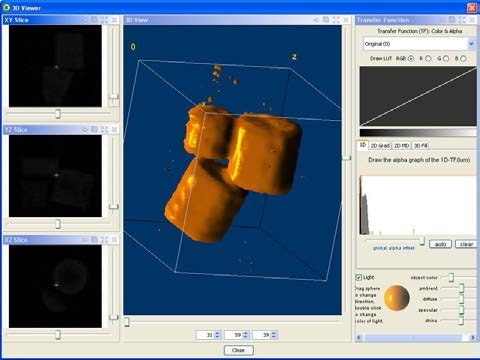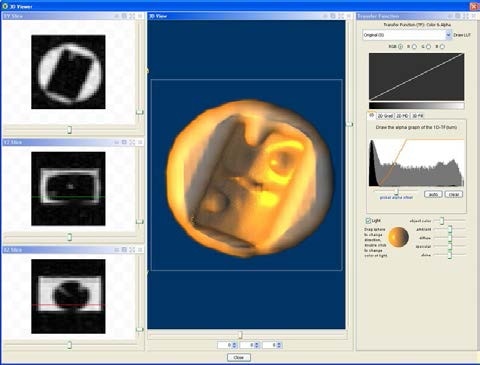Oxford Instruments has been supplying benchtop NMR instruments for core analysis [GeoSpec 12 MHz Core NMR Analyzer] since the early 1990s, when they were introduced to support the development and use of downhole NMR logging tools.
The current GeoSpec range functions at an NMR frequency of 2 MHz, to imitate the downhole tools and also to reduce measurement artifacts caused by the paramagnetic material usually found in sandstones.

The 12 MHz GeoSpec rock core analyzer provides better signal to noise ratio (SNR) allowing for fast high resolution measurements.
Recently, however, there has been a move towards oil and gas exploration in shales. This has resulted in a reappraisal of the usage of NMR for core analysis because of the structural differences in the rock types. While sandstones have normally 15-25% porosity and pore sizes of tens to hundreds of microns, shales are quite likely to have 2-15% porosity and pores only a hundredth the size of sandstone pores.
From the NMR viewpoint, this means there is a lot less fluid from which to acquire an NMR signal, and a need to reach shorter echo times so as to detect the shorter T2 signals from the smaller pores.
Oxford Instruments addressed this issue first by incorporating Q-Sense technology to the GeoSpec range, to permit shorter echo times and enhanced signal to noise ratios. Now, Oxford Instruments have launched a new model in the range to additionally enhance sensitivity for low porosity materials by providing a higher operating frequency.
The GeoSpec12 runs at 12 MHz, which delivers approximately 10x better sensitivity and 100x faster measurements than 2 MHz instruments, while not being high enough to cause significant magnetic susceptibility artefacts, especially with shale samples.
The GeoSpec12 can be fitted with one- or three-axis pulsed field gradients to allow diffusion-based measurements and simple imaging. Green Imaging Technologies LithoMetrix software is provided as standard, with options to upgrade to GIT Systems versions for more advanced applications.

A full suite of 3D viewing and analysis tools is included with GIT Systems 3D imaging software.
| Base Specifications |
| Maximum sample diameter |
53 mm |
| Operating field (frequency) |
0.28 T (12 MHz proton resonance) |
| Gradient strength |
>20 gauss/cm on three axes |